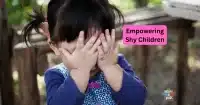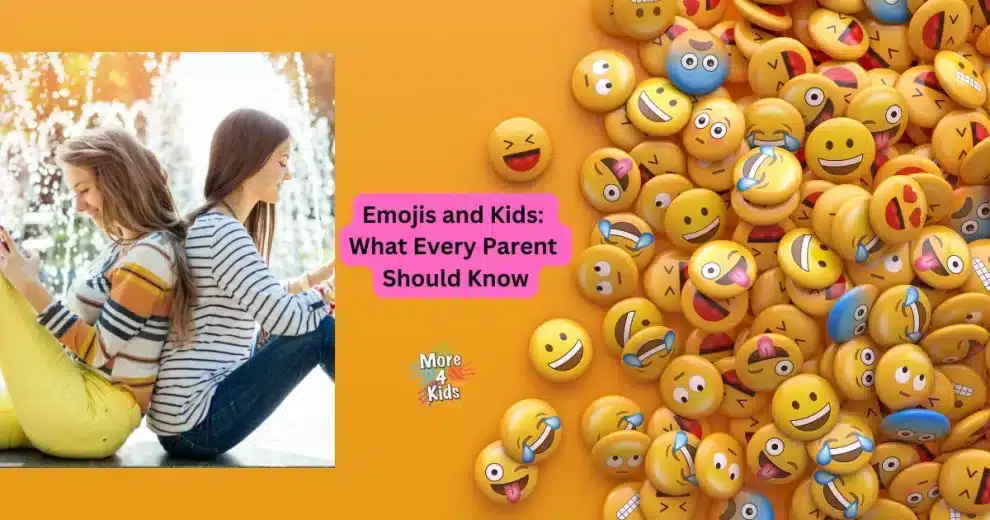As a parent myself I have noticed that my kids are increasingly communicating through emojis. These colorful symbols are more than just cute pictures; they’ve become a universal language that transcends age and geography. But did you know that some emojis have hidden or dual meanings that could be a cause for concern? In this article, we’ll delve into the world of emojis and what you need to know to keep your kids safe online.
Introduction to Emojis
Table of Contents
Emojis originated in Japan in the late 1990s and have since become a global phenomenon. They’re used to express emotions, describe objects, and even replace words altogether. While they can make conversations more engaging and expressive, they can also be used in ways that parents might find concerning. Understanding the language of emojis can help you stay connected with your children and keep them safe online.
Common Emojis and Their Meanings
Before diving into the emojis that have hidden meanings, let’s first look at some common emojis that are used in everyday conversations. Here’s a table to help you understand their general meanings:
These emojis are generally harmless and are used to convey basic emotions or activities.
Common Emojis Every Parent Should Know
Below are some of the most popular emojis explained.
Below are some of the most popular emojis explained
| Category | Emoji | Meaning |
|---|---|---|
| Common Emojis | ||
| 😀 | Happy | |
| 😢 | Sad | |
| 😂 | Laughing | |
| 😡 | Angry | |
| 😍 | Love/Heart Eyes | |
| 🤔 | Thinking | |
| 🙄 | Eye Roll | |
| 😴 | Sleepy | |
| 🤗 | Hugging | |
| 😎 | Cool | |
| Social Emojis | ||
| 👍 | Thumbs Up | |
| 👎 | Thumbs Down | |
| 🤳 | Selfie | |
| 📱 | Mobile Phone | |
| 💬 | Text Bubble | |
| 📷 | Camera | |
| Activity Emojis | ||
| 🎮 | Video Games | |
| 📚 | Study/Books | |
| 🏈 | Football | |
| 🎵 | Music | |
| 🎥 | Movie | |
| Food Emojis | ||
| 🍕 | Pizza | |
| 🍔 | Burger | |
| 🍎 | Apple | |
| 🍭 | Candy | |
| 🍦 | Ice Cream | |
| Warning Emojis | ||
| 🚫 | No Entry | |
| ⚠️ | Warning | |
| 💀 | Skull | |
| 🚭 | No Smoking | |
| 🍺 | Alcohol | |
| Emotions Emojis | ||
| 😊 | Shy/Modest | |
| 😒 | Unimpressed | |
| 😜 | Playful | |
| 😏 | Smirking | |
| 😇 | Innocent |
Emojis with their Hidden Meanings
Now, let’s get into the emojis that have dual or hidden meanings. These are the symbols, such as the eggplant emoji that could be a cause for concern, depending on the context in which they’re used.
Emojis Kids Use That They Don’t Want Their Parents to Know
| Emoji | Common Meaning | Hidden/Dual Meaning |
|---|---|---|
| 🍆 | Eggplant | Sexual innuendo |
| 🍑 | Peach | Sexual innuendo |
| 🌿 | Herb | Marijuana |
| 💊 | Pill | Drugs |
| 🚬 | Cigarette | Smoking |
| 🥃 | Tumbler Glass | Alcohol |
| 💉 | Syringe | Drugs/Injecting |
| 🐍 | Snake | Deceptive person |
| 🙈 | See-No-Evil Monkey | Ignoring something |
| 🙉 | Hear-No-Evil Monkey | Ignoring something |
| 🙊 | Speak-No-Evil Monkey | Keeping a secret |
| 💸 | Money with Wings | Spending money recklessly |
| 🎲 | Game Die | Taking a risk/gambling |
| 🤐 | Zipper-Mouth Face | Keeping a secret |
| 🤫 | Shushing Face | Keep it quiet/secret |
| 😶 | Face Without Mouth | Not telling/silent |
| 🍁 | Maple Leaf | Marijuana (in some contexts) |
| 🍄 | Mushroom | Psychedelic drugs |
| 🌚 | New Moon Face | Shady or suspicious |
| 🌝 | Full Moon Face | Stalking or lurking |
| 🍷 | Wine Glass | Alcohol |
| 🍸 | Cocktail Glass | Alcohol |
| 🍹 | Tropical Drink | Alcohol |
| 🍺 | Beer Mug | Alcohol |
| 🍻 | Clinking Beer Mugs | Alcohol |
| 🥂 | Clinking Glasses | Alcohol |
| 🥳 | Partying Face | Partying/Reckless behavior |
| 🎭 | Performing Arts | Leading a double life |
| 🕶️ | Sunglasses | Shady activities |
| 💣 | Bomb | Something explosive |
| 🗡️ | Dagger | Threat or danger |
| 🔪 | Kitchen Knife | Threat or danger |
Additional Emojis Parents Should Know
| Emoji | Description | Hidden or Dual Meaning |
|---|---|---|
| 🍻 | Clinking Beer Mugs | Alcohol, partying |
| 💉 | Syringe | Drug use, vaccination |
| 💰 | Money Bag | Wealth, bribery |
| 🚀 | Rocket | Euphoria, “high” feeling |
| 🎲 | Game Die | Gambling, taking risks |
| 🚨 | Police Car Light | Emergency, attention |
| 🤫 | Shushing Face | Secrecy, “don’t tell anyone” |
| 🍁 | Maple Leaf | Canada, marijuana (in some contexts) |
| 🥀 | Wilted Flower | Loss, grief |
| 🐍 | Snake | Deception, betrayal |
Additional Emoji Resources: mojiedit.com
As technology evolves, so does the language of emojis. Here are some more emojis that parents should be aware of:
The Role of Emojis in Cyberbullying
In today’s digital age, cyberbullying has become a growing concern for parents and educators alike. While text messages and social media posts are often scrutinized for harmful content, emojis, the colorful symbols we use to express emotions and activities, can sometimes fly under the radar. Yet, these seemingly innocent symbols can play a significant role in cyberbullying, making it crucial for parents to understand their implications.
Emojis as a Tool for Harm
Emojis can be used to amplify the impact of harmful messages. For instance, a bullying text might include emojis like the ? (Bomb) or ? (Devil) to emphasize threats or derogatory terms. These symbols can add an extra layer of intimidation or humiliation, making the victim feel more targeted and vulnerable.
Emojis to Disguise Intent
One of the more insidious aspects of using emojis in cyberbullying is their ability to disguise the true intent of a message. Emojis like ? (Innocent) or ? (Laughing) can be added to harmful messages to make them seem less serious or even playful. This can make it difficult for parents and educators to identify the bullying behavior, as the emojis can create ambiguity around the message’s intent.
The “Secret Code” Phenomenon
Among younger users, emojis can serve as a “secret code” that parents or authorities may not understand. Combinations of emojis can be used to represent specific actions or threats without using explicit language. For example, a sequence like ?? could be used to subtly threaten physical harm. Being aware of these combinations and their hidden meanings is essential for parents who want to monitor their children’s online interactions effectively.
The Emotional Impact
The emotional impact of emojis should not be underestimated. A study has shown that our brains process emojis similarly to how they process human faces. This means that an emoji can evoke emotional responses similar to real-life interactions. When used in a bullying context, emojis can intensify the emotional harm experienced by the victim.
Monitoring and Reporting Emoji-Based Cyberbullying
Parents should be proactive in monitoring their children’s digital communications for signs of emoji-based cyberbullying. Many parental control software options can flag specific emojis or combinations considered risky or inappropriate. If you suspect your child is a victim of cyberbullying involving emojis, it’s crucial to document the evidence and report it to the relevant authorities, be it school officials or, in severe cases, law enforcement.
Understanding the role of emojis in cyberbullying is an essential aspect of modern parenting. While these symbols can be used for positive interactions, they can also be weaponized to harm others. By staying informed and vigilant, parents can better protect their children from the hidden dangers lurking in the colorful world of emojis.
More information can be found on the FTC website about protecting kids online.
The Importance of Open Communication in Understanding Emojis
In the digital age, where screen time often replaces face-to-face interactions, open communication between parents and children becomes more crucial than ever. While understanding the hidden meanings behind emojis is a significant first step, it’s merely a gateway to a much larger conversation about online safety, digital etiquette, and emotional well-being.
Creating a Safe Space for Dialogue
The first step in fostering open communication is to create a safe and non-judgmental space where your children feel comfortable sharing their experiences. This involves active listening and offering guidance rather than immediate judgment or punishment. When children feel heard and respected, they are more likely to open up about their online interactions, including the emojis they use and encounter.
Asking the Right Questions
Instead of general questions like, “How was your day?” consider asking more specific questions related to their digital lives. For example, “Who did you chat with today on [social media platform]?” or “Did you use any new emojis today?” These targeted questions can provide valuable insights into your child’s online behavior and the kind of emojis they are using or receiving.
Discussing the Context
Emojis can have different meanings depending on the context in which they are used. Open dialogue can help you understand the nuances behind each emoji and its intended meaning. For instance, the ? (Peach) emoji could simply refer to the fruit in one context but may have a sexual innuendo in another. Discussing the context can clear up misunderstandings and provide teachable moments for appropriate online behavior.
Setting Boundaries and Expectations
While it’s important to give your children a certain level of privacy and independence, setting boundaries is equally crucial. Make it clear what kind of emoji use is acceptable and what is not. Establish guidelines and expectations for online interactions, including the responsible use of emojis.
The Role of Empathy
Teaching kids empathy is vital in any discussion about communication, digital or otherwise. Help your children understand the impact of their words and emojis on others. This emotional intelligence will not only make them more responsible digital citizens but also better human beings in the real world.
Open communication is the cornerstone of understanding the complex world of emojis and online interactions. It offers a proactive approach to online safety, allowing parents to address issues before they escalate into more significant problems. By maintaining an open dialogue, parents can guide their children through the intricacies of digital communication, ensuring a safer and more respectful online environment.The Importance of Open Communication
Understanding the hidden meanings behind emojis is just the first step. The most effective way to keep your kids safe online is through open communication. Talk to them about the emojis they use and the conversations they’re having. Make it a safe space for them to share, so you can guide them through the complexities of online communication.
Conclusion
Emojis are more than just fun symbols; they’re a form of language that can have deeper meanings. As a parent, staying informed about these hidden meanings is crucial for your child’s online safety. Open dialogue and education are key in navigating this colorful world of digital expression.
By understanding the language of emojis, you’re not just keeping up with the times; you’re also taking an active role in your child’s online safety.
Frequently Asked Questions (FAQ)
1. Are There Emojis with Hidden or Dual Meanings?
Answer: Yes, some emojis like ? (Eggplant) and ? (Peach) have hidden or dual meanings, often sexual innuendos, that parents should be aware of.
2. How Can Emojis Be a Concern for Parents?
Answer: Emojis with hidden meanings can be used to discuss inappropriate or risky behavior, making it crucial for parents to understand their context.
3. What Emojis Indicate Substance Use?
Answer: Emojis like ? (Herb) and ? (Pill) can indicate marijuana and drug use, respectively.
4. Are There Emojis That Indicate Deceptive Behavior?
5. How Can Parents Keep Their Kids Safe Regarding Emojis?
Answer: Open communication about the emojis and their meanings is key to keeping kids safe online.
6. Can Emojis Be Used to Discuss Financial Behavior?
Answer: Yes, emojis like ? (Money with Wings) can indicate reckless spending or financial risk-taking.
7. Are Emojis Evolving?
Answer: Emojis are constantly evolving with technology, adding new symbols and meanings that parents should stay updated on.
8. What Are Emojis?
Answer: Emojis are digital symbols used to express emotions, activities, and objects in text messages and online platforms.
9. Where Did Emojis Originate?
Answer: Emojis originated in Japan in the late 1990s and have since become a global phenomenon for digital communication.
10. What Are Common Emojis Used for Everyday Conversations?
Answer: Common emojis like ? (Happy), ? (Sad), and ? (Laughing) are used to express basic emotions and are generally harmless.
By incorporating these FAQs into your understanding of emojis, you’ll be better equipped to navigate the digital landscape and ensure your child’s online safety.












Add Comment